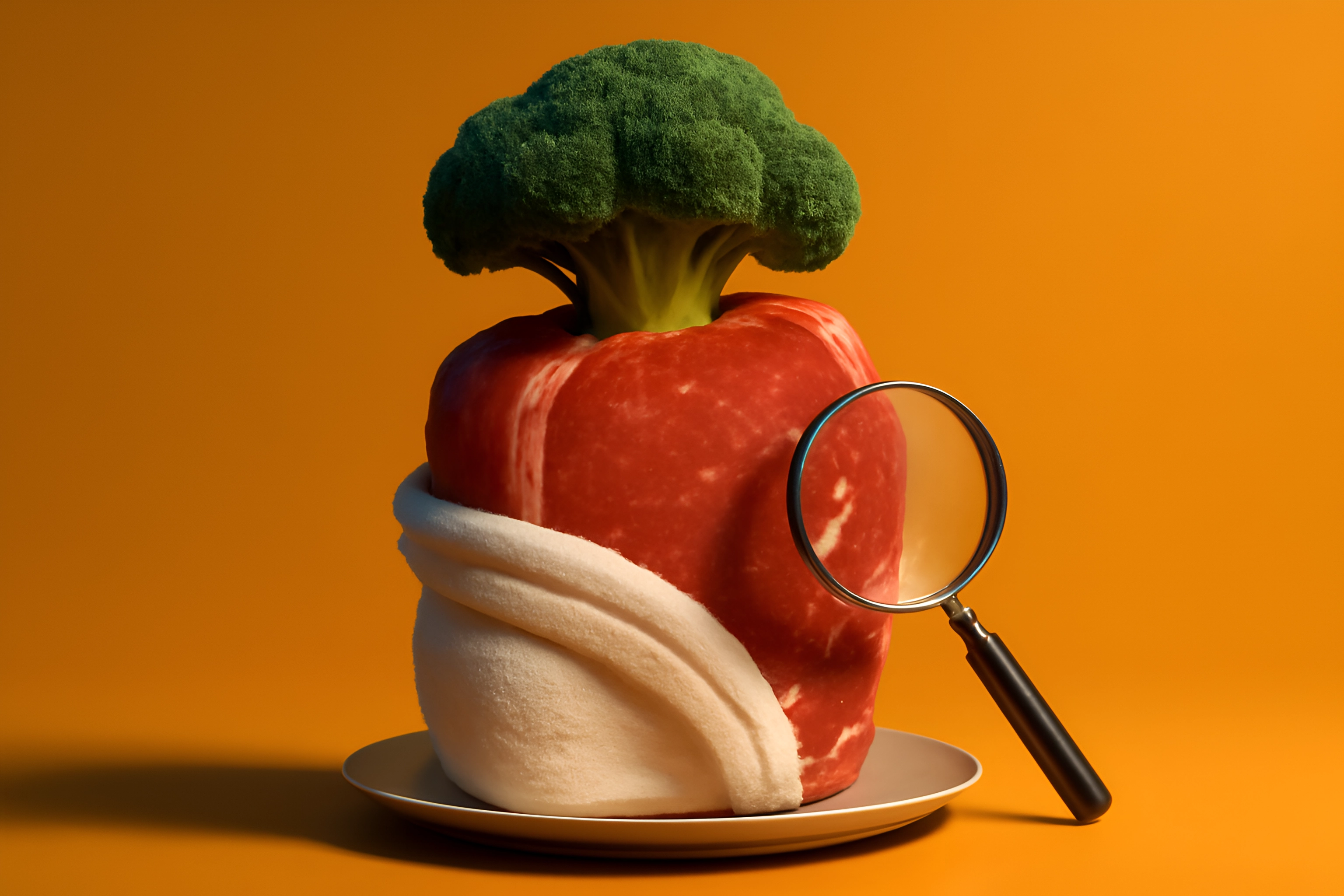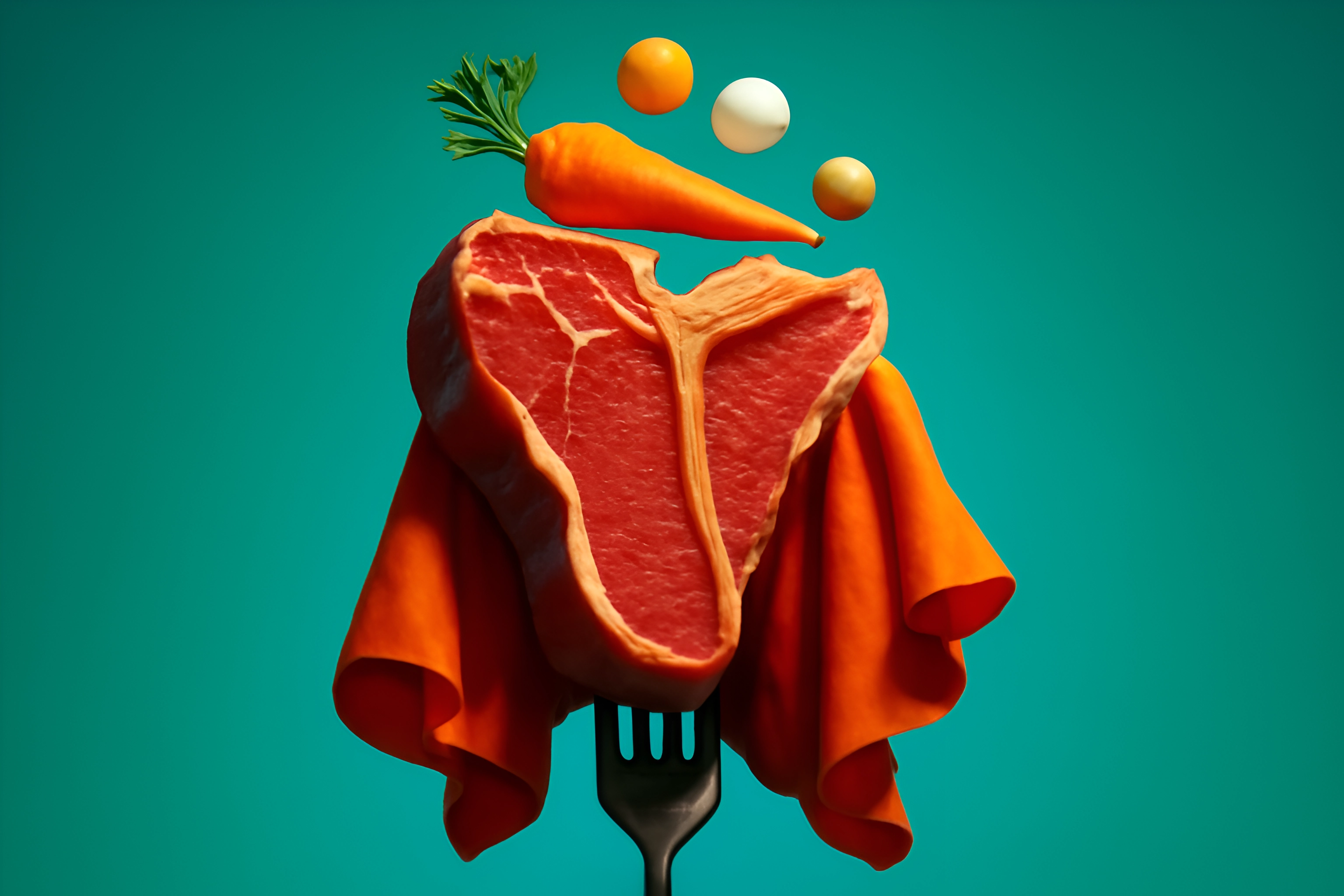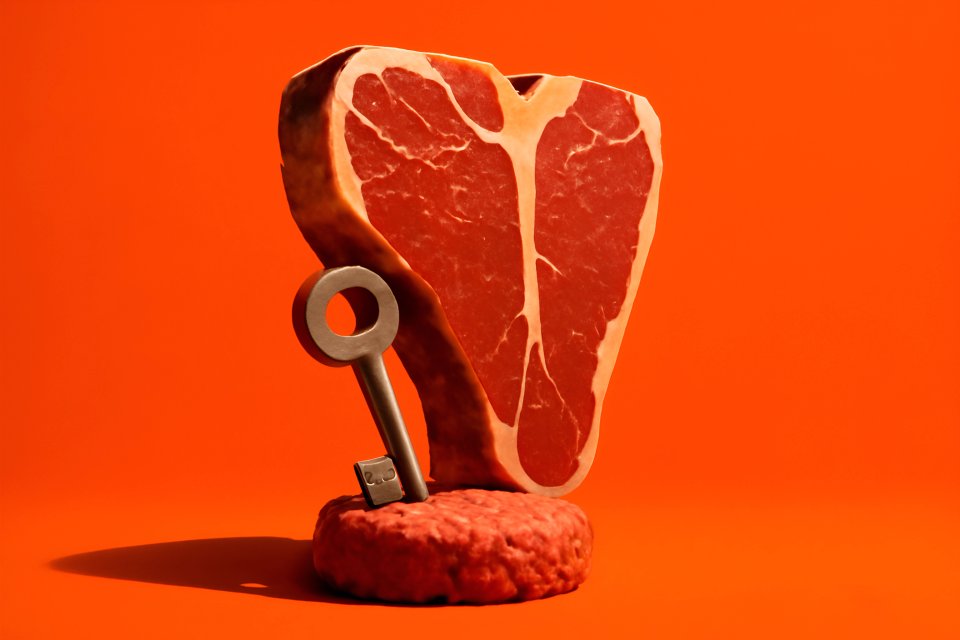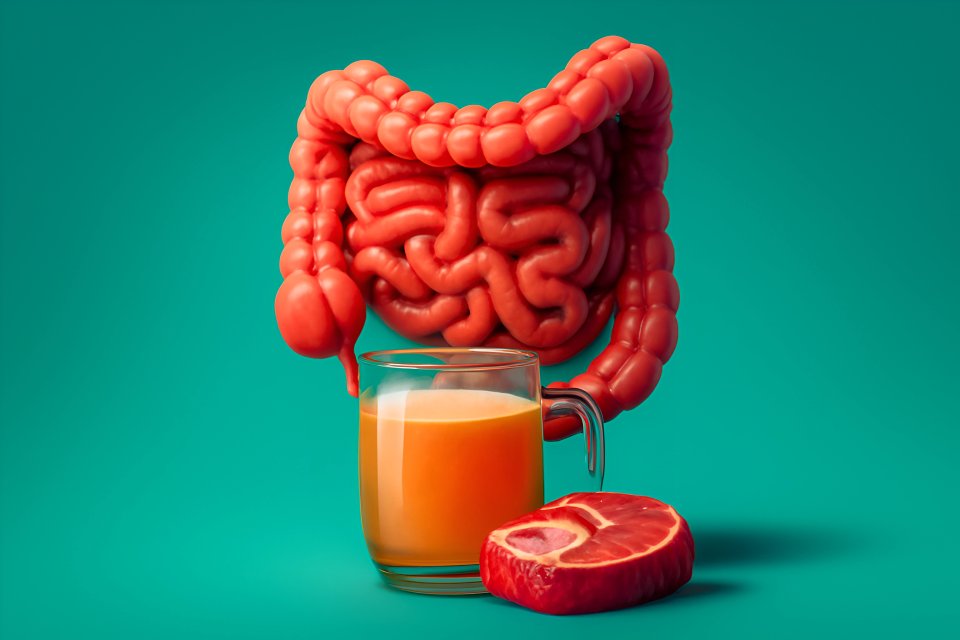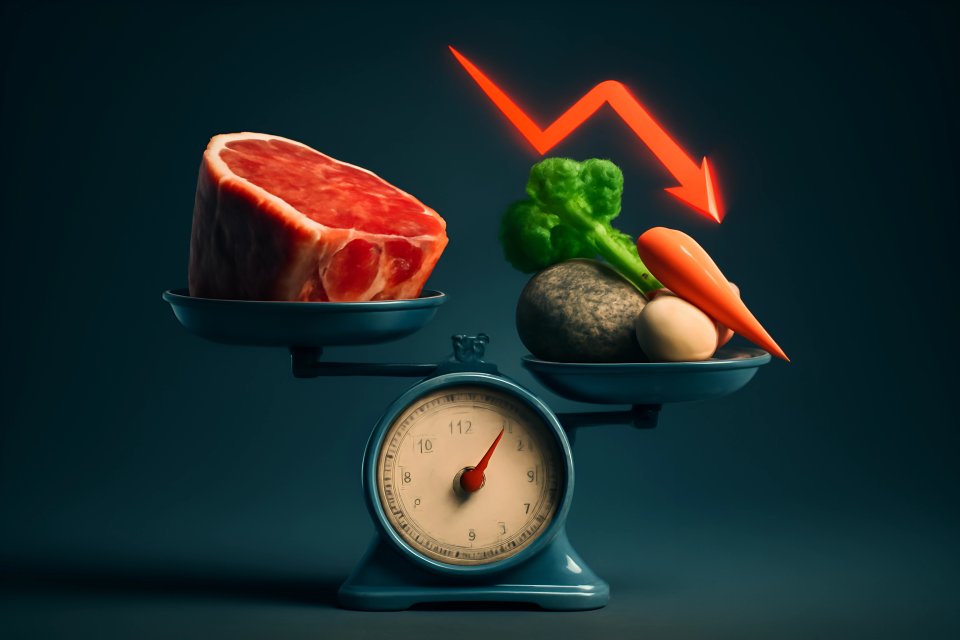
Introduction: The Silent Fire Within
Are you tired of the constant aches, brain fog, and stubborn puffiness? This isn't just 'getting older'—it's the silent, smoldering fire of chronic inflammation. Mainstream advice often complicates the solution with endless supplements and restrictive plant-based protocols, but what if the answer was radical simplicity?
The truth is, our modern world is a minefield of inflammatory triggers. The standard Western diet, loaded with sugar, industrial seed oils, and irritating plant compounds, is the primary fuel for this fire, leading to a cascade of health issues from autoimmune conditions to persistent fatigue. This isn't a battle you can win by nibbling on kale; it's a war that requires a foundational shift in how you nourish your body.
This guide will walk you through the science-backed, natural strategies—both on and off your plate—to effectively reduce inflammation and reclaim your body's innate ability to heal. We will explore how an animal-based approach, rooted in ancestral wisdom, provides the ultimate toolkit for extinguishing the fire within. By understanding these principles, you can move from merely surviving to truly thriving.
Understanding Inflammation: The Good, The Bad, and The Chronic
It's crucial to understand that not all inflammation is your enemy. Acute inflammation is a brilliant, short-term healing response from your immune system. Think of the swelling and warmth around a sprained ankle—that’s your body rushing resources to the site to protect and repair the damage.
The real villain is chronic inflammation, a low-grade, systemic fire that never goes out. Unlike the targeted response of acute inflammation, this is a destructive, body-wide state that research now links to nearly every modern disease. This persistent immune activation is a key driver of everything from heart disease and diabetes to arthritis and neurodegenerative decline.
At the heart of this problem often lies a compromised gut lining, a condition known as "leaky gut." When your intestinal barrier is damaged, undigested food particles and bacterial toxins can escape into your bloodstream, triggering a massive and continuous immune response. This makes healing your gut a non-negotiable first step in calming systemic inflammation.
The Carnivore Diet: Your Foundational Anti-Inflammatory Protocol
Strategy 1: Radical Elimination of Inflammatory Triggers
The carnivore diet’s power comes from what it removes. By eliminating all plant foods, you systematically cut out the primary dietary drivers of inflammation. This includes plant defense chemicals like lectins and oxalates, which can directly irritate the gut lining and provoke an immune response.
You also eliminate sugar and refined carbohydrates, which spike insulin and fuel inflammatory pathways throughout the body. Studies show that diets high in sugar promote the production of inflammatory cytokines. According to a study published in the American Journal of Clinical Nutrition, participants who consumed just one sugar-sweetened soda per day showed a significant increase in inflammatory markers.
Finally, and perhaps most importantly, you ditch industrial seed oils like canola, soy, and corn oil. These oils are unnaturally high in Omega-6 fatty acids, which promote inflammation when not balanced by anti-inflammatory Omega-3s. By removing these three core offenders, you starve the inflammatory fire at its source, a strategy that makes the carnivore diet uniquely effective compared to other approaches like the Paleo diet, which still includes potential plant irritants.
Strategy 2: Healing the Gut, Healing the Body
Once the constant assault from plant toxins and sugar stops, your gut finally has a chance to heal. The carnivore diet provides the exact building blocks your body needs to repair the intestinal lining. Nutrients like collagen, gelatin, and the amino acid glutamine—all abundant in animal foods—are essential for rebuilding the tight junctions that keep your gut barrier sealed.
A sealed gut is your fortress against systemic inflammation. It prevents endotoxins from bacteria, known as lipopolysaccharide (LPS), from entering your bloodstream and triggering a body-wide alarm. This direct link between diet, gut health, and inflammation is why so many people on a carnivore diet report dramatic improvements in conditions far beyond the gut, such as the remarkable clearing of chronic skin issues like eczema and psoriasis.
This process of radical elimination is why you don't need to worry about traditional dietary fiber. The goal is to remove the irritants, and as you'll find when you debunk the common myths about fiber, a healthy gut doesn't require plant roughage to function optimally.
Myth Buster Section: "But Isn't Red Meat Inflammatory?"
This is one of the most pervasive and damaging myths in modern nutrition. The idea that red meat causes inflammation comes from flawed observational studies that fail to account for context. These studies often lump fresh, unprocessed red meat in with processed meats and ignore the "unhealthy user bias"—the fact that people eating burgers are often eating them on a refined flour bun with a side of fries cooked in seed oil and a large sugary soda.
When scientists conduct randomized controlled trials—the gold standard of research—the myth falls apart. A 2023 study from Baylor College of Medicine found no direct link between unprocessed red meat consumption and inflammation when accounting for other lifestyle factors. In fact, high-quality red meat provides anti-inflammatory nutrients like zinc, iron, and stearic acid.
The real culprits are the processed foods and industrial oils that meat is so often paired with in the standard Western diet. When you consume meat in the context of a clean, species-appropriate carnivore diet, it becomes a powerful tool for healing, not harm. This is a key fact to understand, just as it's important to dispel the myths about the carnivore diet and heart health.
Supercharging Your Results: Nutritional Strategies for Deep Healing
Focus on Food Quality
To take your healing to the next level, quality is everything. Choosing grass-fed and finished meats over their conventional counterparts provides a vastly superior nutrient profile. Grass-fed beef contains up to five times more anti-inflammatory Omega-3 fatty acids and is significantly higher in Conjugated Linoleic Acid (CLA), a fat that has been shown to reduce inflammatory markers.
The same principle applies to other animal products. Pasture-raised eggs have a much healthier Omega-3 to Omega-6 ratio, helping to balance your body's inflammatory signaling pathways. This isn't about food snobbery; it's about strategic nutrient sourcing.
Making these choices ensures you are flooding your body with the most potent anti-inflammatory compounds nature has to offer. You are not just eating meat; you are consuming a nutrient-dense matrix designed for optimal cellular function and repair.
Leverage Anti-Inflammatory Superfoods
Within the carnivore framework, certain foods are true powerhouses for quenching inflammation. Fatty fish like wild-caught salmon, mackerel, sardines, and anchovies are packed with the marine Omega-3s EPA and DHA, which are the most potent anti-inflammatory fats available.
Organ meats are another non-negotiable for deep healing. Beef liver is nature's multivitamin, rich in retinol (the active form of Vitamin A) and copper, both of which are critical for immune regulation. Beef heart is the best dietary source of Coenzyme Q10, a powerful antioxidant that protects your cells from inflammatory damage.
Don't forget the magic of bone broth. Slowly simmered bones release collagen, glycine, and proline, which directly soothe and repair the gut lining. You can easily incorporate these foods by trying some simple gut-healing carnivore recipes that make these superfoods both accessible and delicious.
Prioritize Healthy Animal Fats
Fat is not the enemy; it is your primary fuel source and a key player in managing inflammation. Stable, nutrient-rich animal fats like beef tallow, lard, and grass-fed butter or ghee should be your go-to for cooking and energy. These fats are heat-stable and don't create the toxic, inflammatory byproducts that are formed when you cook with unstable seed oils.
Tallow from grass-fed animals is particularly rich in stearic acid, a saturated fat that has been shown to improve mitochondrial function and reduce inflammation. Grass-fed butter contains butyrate, a short-chain fatty acid that is known to have potent anti-inflammatory effects in the gut and throughout the body.
By embracing these healthy fats, you provide your body with clean, long-lasting energy that keeps your blood sugar stable and your inflammatory markers low. This is a cornerstone of a well-formulated carnivore diet.
Beyond the Plate: Lifestyle Habits to Extinguish Inflammation
Prioritize Restorative Sleep
You cannot heal without high-quality sleep. It is during deep sleep that your body performs most of its repair work. A lack of sleep, or poor quality sleep, leads to elevated levels of cortisol and inflammatory cytokines like TNF-α and IL-6.
To optimize your sleep, create a sanctuary for rest. Make your room as dark as possible with blackout curtains, and eliminate all sources of blue light from screens at least an hour before bed. According to a study in the Journal of Clinical Endocrinology & Metabolism, even dim light exposure during sleep can increase insulin resistance and disrupt metabolic function the next morning.
Prioritizing an 8-hour sleep window is not a luxury; it is a powerful anti-inflammatory therapy. This simple, free habit can have a more profound impact on your health than any expensive supplement.
Manage Stress Naturally
Chronic stress is a direct trigger for chronic inflammation. When you are constantly stressed, your body pumps out cortisol, which over time can lead to glucocorticoid resistance, a state where your cells no longer respond to cortisol's anti-inflammatory signals.
You can combat this with simple, natural practices. Get sunlight in your eyes within the first hour of waking to set a healthy circadian rhythm and cortisol pattern for the day. Practice grounding, or "earthing," by walking barefoot on grass or soil, which studies suggest can reduce inflammation and pain.
These practices are not "woo-woo"; they are powerful biological signals that tell your body it is safe. By managing your stress, you are directly turning down the dial on inflammation.
Incorporate Smart Movement
Movement is medicine, but the dose makes the poison. While intense, chronic cardio can be a stressor that increases inflammation, gentle and strategic movement has the opposite effect. Just 20 minutes of moderate exercise, like a brisk walk, can stimulate an anti-inflammatory cellular response.
Low-impact activities like walking and gentle resistance training are ideal. They help improve circulation, manage blood sugar, and release endorphins without over-taxing your system. The goal is to move your body in a way that feels restorative, not depleting.
Avoid the "more is better" mindset. Listen to your body and choose forms of movement that support your healing journey, rather than hinder it.
Conclusion: Reclaim Your Health, One Meal at a Time
Healing from chronic inflammation isn't about adding more supplements or complicated protocols; it's about radical subtraction. By removing the foods that harm and focusing on the nutrient-dense animal foods that heal, you give your body the chance to do what it does best: repair itself. You can amplify these effects by focusing on food quality and adopting simple, powerful lifestyle habits like prioritizing sleep and managing stress.
You have the power to calm the fire within. This journey is about reclaiming your birthright to a vibrant, pain-free life, and it starts with the very next meal you eat. By embracing these principles, you are not just starting a diet; you are starting a revolution in your own health.
Have you used the carnivore diet to reduce inflammation? Share your story in the comments below to inspire others! For practical meal ideas, check out our Ultimate Carnivore Recipes for Inflammation Reduction.
FAQ Section
How long until I feel less inflamed on the carnivore diet?
This varies from person to person, but many people report noticeable improvements within the first few days to weeks. Common early signs include less puffiness, reduced bloating, and decreased joint pain. Deeper, systemic healing continues to occur over months as your body repairs tissues and normalizes immune function.
What are the first signs that inflammation is decreasing?
The first signs are often subtle but powerful. You might notice your rings fit looser, your face looks less puffy in the morning, and nagging joint aches begin to fade. Many also report a significant improvement in mental clarity and energy levels, as brain fog lifts.
Can I have dairy if I'm trying to reduce inflammation?
It depends. Dairy can be a source of inflammation for many people, particularly conventional A1 casein dairy. If you choose to include it, opt for A2 dairy from goats or sheep, or use grass-fed ghee, which has the milk solids removed. The best approach is to eliminate all dairy for at least 30-60 days and then reintroduce it to see how your body responds.
What if I'm still inflamed after a month on carnivore?
If you're still experiencing signs of inflammation after a month, it's time to troubleshoot. Common culprits include poor quality meat (grain-fed), continued consumption of dairy or eggs (which can be problematic for some), coffee, or hidden lifestyle stressors like poor sleep or chronic stress. Consider a stricter version of the diet, focusing only on beef, salt, and water for 30 days to establish a clean baseline.




